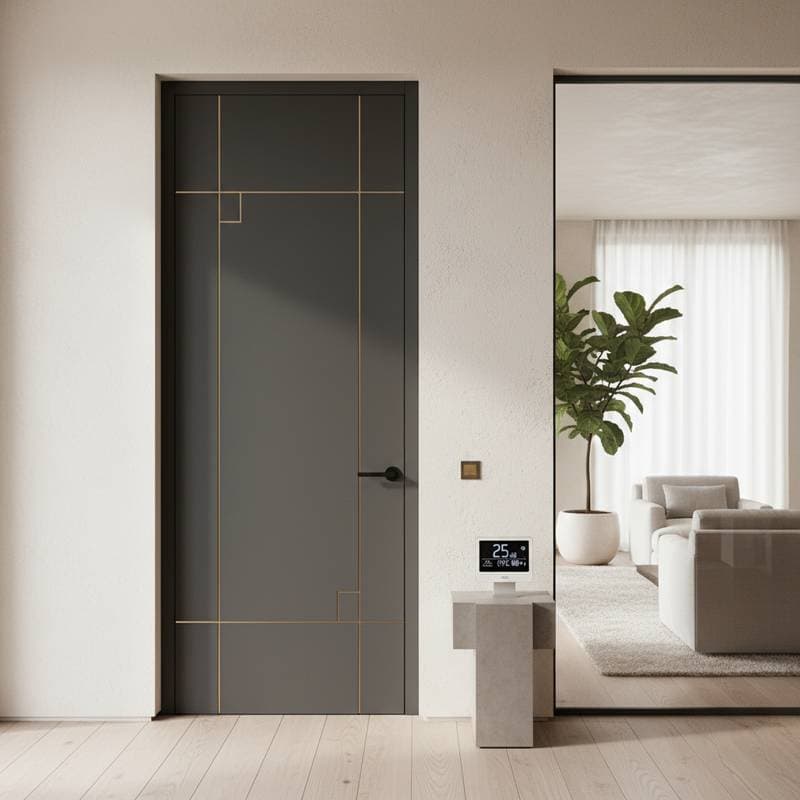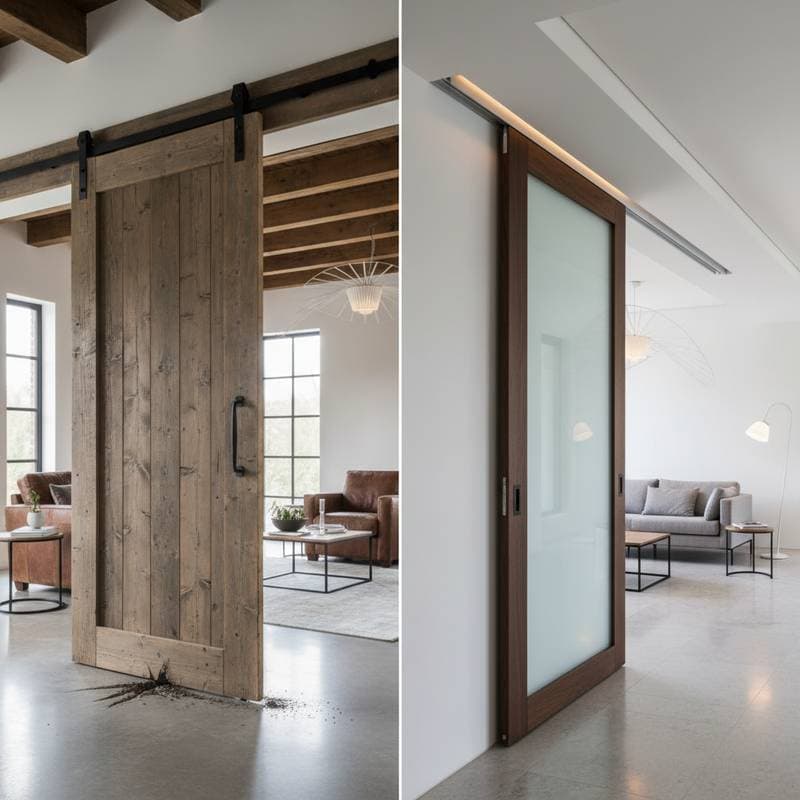Why Invisible Track Systems Define 2025 Barn Door Minimalism
Barn doors have transitioned from rustic elements to sophisticated components in minimalist interiors. Invisible track systems lead this evolution by hiding the mounting hardware while preserving smooth sliding operation. Homeowners favor these systems for delivering barn door appeal without visible bulk, ideal for contemporary spaces.
These doors merge precise engineering with understated elegance. They provide effortless movement, reclaim wall area, and foster serene environments. The following sections detail costs, materials, installation, and strategies to integrate them effectively into modern designs.
Average Cost of Invisible Track Barn Doors
Invisible track systems exceed the price of standard hardware due to advanced engineering and expert fitting. A complete installation, encompassing the door, hidden track, and professional labor, ranges from $1,200 to $3,500, influenced by material selection and project scope.
Custom setups embedding tracks into ceilings or walls increase expenses by 15 to 25 percent. Options like pre-assembled units or retrofit kits offer affordability for those tackling partial installations independently.
| Material/Service | Cost Range | Key Features |
|---|---|---|
| Invisible Track Hardware | $250 to $750 | Concealed design, quiet operation, minimal upkeep |
| Solid Wood Barn Door | $600 to $1,800 | Sturdy construction, personalization options, high-quality coatings |
| Glass or Composite Door | $700 to $2,200 | Contemporary appearance, light enhancement, resistance to humidity |
| Professional Installation | $300 to $1,000 | Structural assessment, accurate alignment, surface completion |
Key Design Options and Material Choices
Invisible tracks pair with diverse materials, yet selections must align aesthetics, weight, and longevity. Consider door weight against track capacity to ensure reliability.
Heavier solid wood doors demand robust tracks rated for at least 200 pounds. Lighter glass or composites permit sleeker profiles, amplifying the hidden aesthetic.
| Door Material | Typical Cost (with hardware) | Best Use |
|---|---|---|
| Solid Oak or Walnut | $1,500 to $2,800 | Luxurious finish, modern living rooms |
| Engineered Wood | $1,000 to $1,800 | Dimensional stability, budget-friendly customization |
| Frosted Glass | $1,200 to $2,400 | Soft illumination, bathrooms or workspaces |
| MDF with Veneer | $900 to $1,600 | Even texture, painted applications |
Maintenance and Long-Term Care
These systems require minimal upkeep, yet consistent attention ensures optimal performance. Clear dust from roller-track interfaces using a soft brush or vacuum.
Sealed bearings eliminate frequent lubrication needs. Annual checks of alignment and hardware prevent minor issues from escalating.
For wood doors, refresh protective coatings every few years to guard against moisture and sun damage. Clean glass panels with mild, non-abrasive cleaners, steering clear of harsh substances that harm seals. Maintain dryness in the track area to avert rust, particularly in moist environments.
Factors That Influence Cost and Complexity
Project expenses and challenges stem from several variables. Understanding them aids in precise budgeting and preparation.
- Wall Structure: Reinforce load-bearing or fragile walls, adding $200 to $600 in labor.
- Door Size and Weight: Larger formats necessitate enhanced tracks, boosting costs by 10 to 20 percent.
- Material Finish: Premium options like reclaimed veneers or lacquers elevate prices; custom coloring adds $150 to $400.
- Ceiling Integration: Embedding tracks in ceilings or soffits extends labor time and fees, though it achieves a flawless floating effect.
- Professional Labor Rates: Expect $75 to $150 hourly, varying by location.
Integrating Invisible Tracks for Enduring Minimalism
Coordinate invisible track doors with subtle surroundings to amplify minimalism. Select matte neutral paints, warm wood shades, or expansive panels for harmony.
Position recessed lighting or sconces to accentuate the door's fluid motion. Choose concealed handles or edge pulls to preserve surface uniformity.
Apply consistent finishes and track styles across rooms like bedrooms, studies, and storage areas. This approach establishes seamless continuity, elevating the home's overall aesthetic while maximizing functionality.






